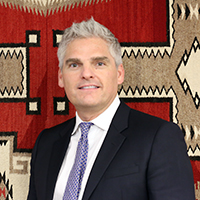May is National Hepatitis Month, and May 19 is the observance of Hepatitis Testing Day. These observances are important opportunities to raise more widespread awareness of viral hepatitis and its impact in the U.S. and expand our coordinated national efforts to improve the health of the estimated 850,000 people living with hepatitis B and 2.4 million people living with hepatitis C.
When it comes to the hepatitis C virus, the Indian Health Service is pleased to see a continued increase in HCV testing. Since 2012, the national recommendations were to test all people born 1945-1965; we often call this group the ‘baby boomers.’ More recently, IHS expanded the HCV testing recommendations to include all persons 18 years and older (also known as ‘universal screening’), in large part because we have data that show the medical benefits of early diagnosis, treatment, and cure.
According to CDC data , American Indians and Alaska Natives still have an HCV-related death rate that is more than double the national rate. Early screening and proper medical care can eliminate this disparity in our Native communities.
IHS tracks both the baby boomers and universal HCV testing measures throughout Indian Country. Among American Indian and Alaska Native baby boomers, IHS HCV screening coverage increased from 11% in 2012 to 66% in 2019, and universal HCV screening coverage is up to 46%. These improvements in testing go hand-in-hand with recent changes at IHS, tribal, and urban Indian health facilities. Many of these facilities have added ‘reminders’ to the electronic health record to ensure that patients who have never been tested for HCV are offered a test. Just as important, if a patient tests positive, our clinics can treat them rather than referring them outside of the Indian health system.
Medications for HCV treatment are free to people who qualify for IHS services. And HCV treatment is simple for most patients. Usually, the treatment for HCV is about two pills per day, for 8 to 12 weeks, with over 95% cure rate. HCV treatment has become a routine medical service in many Indian health clinics.
We still have work to do, but we can be proud of how quickly we have ramped up HCV testing and treatment. However, a one-time screen does not replace additional “risk-based” HCV tests that clinicians might order when a person has had potential bloodborne exposure to HCV, such as injecting drug use or non-professional tattooing.
For more information on HCV, visit the Know More Hepatitis campaign page or visit the Northwest Portland Area Indian Health Board Hepatitis C Project for additional resources.
Related content:
Indian Health Service highlights initiative to eliminate hepatitis C and HIV/AIDS in Indian Country during National Native HIV/AIDS Awareness Day
Center of Excellence at Phoenix Indian Medical Center – Achieving Excellence in HIV and HCV Care
The Costs and Benefits of Expanding Hepatitis C Screening in the Indian Health Service



